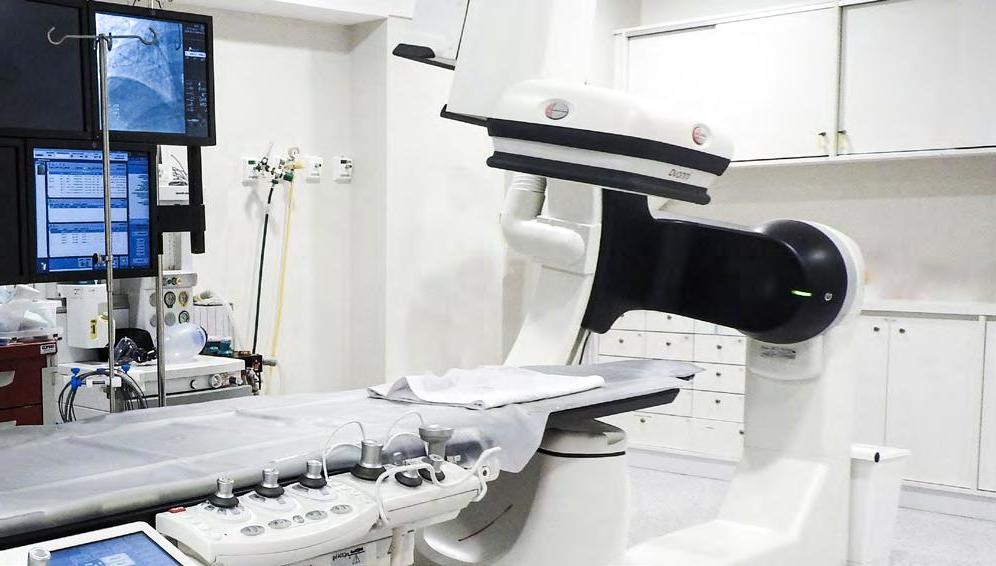02
How China is responding to the three megatrends: health in all policies China is responding to three dominant megatrends by trying to meet the needs of its aging society and rising middle class as well as to fully leverage the opportunities offered by digitalization. It has been doing this through a number of wide-ranging industry and social reforms and has a successful track record: In the past two decades China has expanded accessibility to health insurance, with coverage for over 95 percent of the population38. And over the last three decades it has succeeded in lifting 600 million people out of poverty39. In the last ten years it has steadily increased total expenditures on health. In 2017, China’s total health expenditures reached about 5.2 percent of GDP, compared to under four percent of GDP in 200640, while China´s overall GDP increased almost fivefold within the same time41. And China’s government is determined to continue this progress. Recognizing health’s effect on social and economic development, President Xi Jinping has placed it at the heart of policymaking. To this end, the government has set up industrial and social policies under Made in China 2025 (MIC 2025)42 and Healthy China 2030 (HC 2030)43, and today these programs are guiding all health care-related decision-making in China. With MIC 2025, China is pushing its independent technology development. It also is opening up for cooperation, and it has triggered reforms to improve the business environment. Within these policies, China has also set out concrete measures to tackle the increasing cancer burden caused by an aging demographic. China has set up action programs in areas such as digitalization and AI. These programs are promoting concrete ideas
38
Zhang, Yan et al., National Health Insurance Development in China from 2004 to 2011: Coverage versus Benefits., Ed. Yue Wang. PLoS ONE 10.5 (2015): e0124995. PMC. <https://www.ncbi.nlm.nih.gov/pmc/articles/PMC4447421/> (accessed on 17.07.2020).
39
World Bank; Healthy China: Deepening Health Reform in China, 2019, p. 1, <https:// openknowledge.worldbank.org/bitstream/handle/10986/31458/9781464812637. pdf?sequence=2&isAllowed=y>.
40
World Bank; Data: Current health expenditure (% of GDP) China, <https://data. worldbank.org/indicator/SH.XPD.CHEX.GD.ZS?locations=CN> (accessed on 20.07.2020).
41
World Bank; Data China´s GDP growth in USD:<https://data.worldbank.org/ indicator/NY.GDP.MKTP.CD?locations=CN> (accessed 20.07.2020).
42
LexisNexis, Circular of the State Council on Issuing the Made in China 2025, <http://china.lexiscn.com/law/law-english-1-2588408-T.html?access=content_ detail&lang=cn&eng=0&keyword=TWFkZSBpbiBDaGluYSAyMDI1&t_kw=T WFkZSBpbiBDaGluYSAyMDI1&act=detail&prid=e068fb69-2975-ed76-4656ef1c397e9065&crid=b64957a2-4271-40b9-890e-04e822720439> (accessed on 17.07.2020).
43
LexisNexis, Outline of the Plan for "Healthy China 2030", <Circular of the State Council on Issuing the Made in China 2015: http://china.lexiscn.com/law/lawenglish-1-2961294-T.html> (accessed on 17.07.2020).
on how to advance health services and meet the needs of an aging society and a growing middle class.
China: Ambitious policies for challenging megatrends Chinese government policies such as Healthy China 2030 and Made in China 2025 aim to tackle three megatrends, which are having significant impact on various areas of health care:
1
An aging population
The aging of China’s population is making non-communicable diseases (NCDs) such as diabetes, stroke, and cancer more prevalent. It also is causing increased demand for prevention, better diagnostics and treatment, rehabilitation and care, and nursing services for the elderly.
2
Digitalization
Digitalization has started to penetrate and shape all levels of health care, and it will continue to do so. The use of health registries and information systems, artificial intelligence (AI), and other approaches to process health data has the potential to improve various stages of the patients’ journey and make evidence-based and cost-effective decisions about interventions.
3
The rising middle class
The increasing disposable income available to China’s growing middle class is likely to lead to increased demand for health care services and financial coverage for them44.
44
EY 2018, White Paper on China´s Healthcare Insurance: https://www.ey.com/ Publication/vwLUAssets/ey-white-paper-on-china-commercial-healthinsurance/$File/ey-white-paper-on-china-commercial-health-insurance.pdf (accessed 16.7.2020)
11











